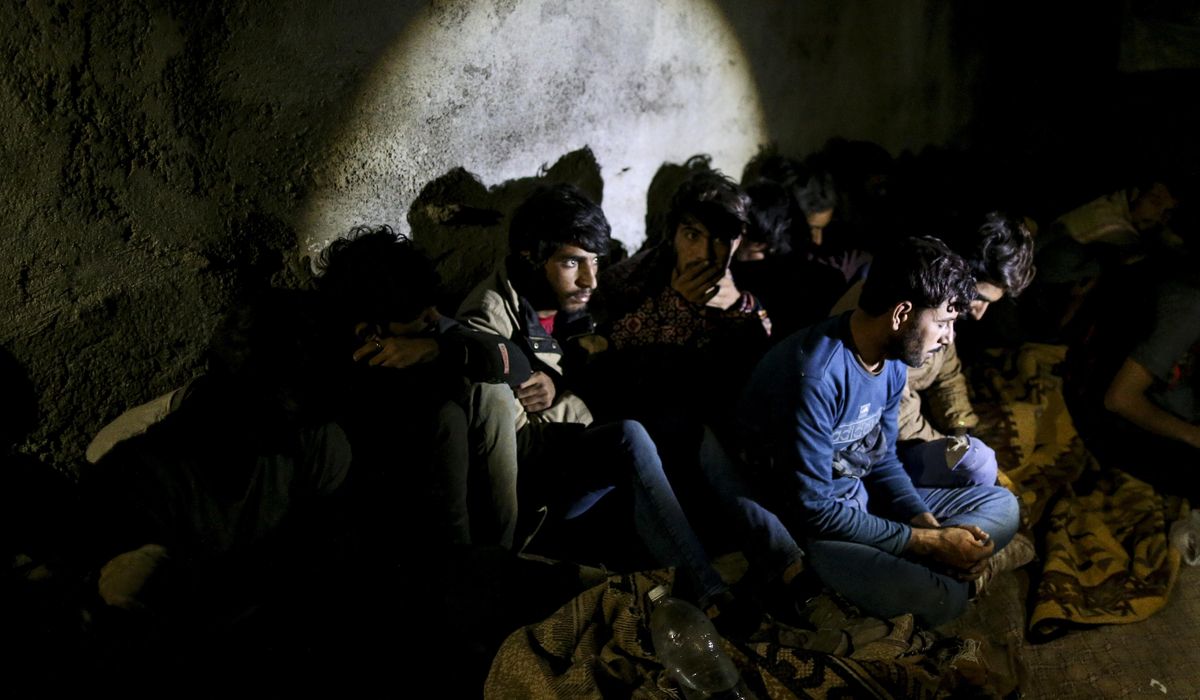


The market for illegally trafficked human organs such as kidneys, livers and lungs is small but growing — and at least some of the supply appears to be provided by traffickers who target migrants trying to reach the U.S.
Jarrod Sadulski, a criminology expert and associate professor at the American Military University, brought the issue to Congress last month with searing testimony about organ trafficking along major migrant smuggling corridors — and, in particular, juvenile organs.
He described one case, told to him by a rehabilitated gang member in Central America, of a 12-year-old boy who was kidnapped in Mexico in order to harvest his eye. Someone paid $15,000 for it.
“This organ trafficker would frequent homeless places, shelters, encampments and drug houses where families camped with their kids,” Mr. Sadulski told the House Homeland Security Committee. “He would offer money to the parents to take the kids out of that environment and would never return with those children.”
At a time when so much of the immigration debate in the U.S. revolves around the people who make it here and get caught and released into communities, Mr. Sadulski and others are drawing attention to those who die in the attempt or who get stolen by traffickers.
Sex and labor trafficking are the big markets, fueled at least in part by the immigration surge. But Mr. Sadulski said organ trafficking belongs in the conversation as another horror.
“There is a market for juvenile organs,” the gang member told Mr. Sadulski.
The size of the organ trafficking market is pure guesswork, and how much of it is fueled by kidnapped migrants is even tougher to pinpoint, though like sex trafficking, migrants likely account for only a fraction. When it does occur, it is usually on the periphery of the smuggling economy, just like sex trafficking.
Mr. Sadulski told The Washington Times that organizations will embed spotters inside groups of migrants, tasked with collecting intelligence on who may be vulnerable.
They look for people who don’t have money to finish the smuggling journey — usually migrants pay some money upfront to start, then owe more along the way or at their destination. Those who look like they might be deadbeats get sold to traffickers, Mr. Sadulski said.
“This could be for the purpose of sex trafficking, other forms of forced labor, or organ harvesting,” the criminologist said in an email. “The human smugglers and human traffickers occupy the same routes leading to the United States and know one another.”
A 2019 article in the American Journal of Biomedical Science & Research said the price of a kidney on the organ market ranges from $50,000 to $120,000, a liver can run from $99,000 to $145,000 and lungs, hearts and pancreases go for even more.
An eye can go for between $5,000 and $100,000, according to the journal.
That lends some credence to the $15,000 price tag the gang member told Mr. Sadulski.
That stunned members of Congress during the hearing.
“Fifteen thousand dollars for an eye,” said Rep. Josh Brecheen, Oklahoma Republican. “We know that there has been a failure.”
Last year the U.N. labeled organ harvesting “one of the least known but growing forms of trafficking worldwide.” It said the extent of the horrors “is not yet known,” but organ trafficking has been reported in North Africa, South and Southeast Asia, Europe and Central America.
Driving the market is a mismatch between the growing demand for organs and the limited supply. Limiting the market is the medical complexity: It takes a skilled doctor to perform the procedures.
The U.N. says kidneys are the most prominent organ, with livers a distant second. Victims “tend to be individuals in a situation of acute vulnerability, including undocumented migrants, refugees, detainees and/or people living in hardship or extreme poverty.”
There have been some prosecutions of organ harvesters over the years.
In one case reported by local news in Guatemala earlier this year, authorities arrested four doctors they said were involved with harvesting a woman’s kidney.
The woman went to a hospital in Guatemala City for an operation and later felt discomfort so she went back to be checked. Other doctors then discovered her kidney had been removed without her approving that surgery.
Another case a decade ago in Costa Rica saw organ sellers collecting $3,000 to $6,000 for a kidney, which was then shipped to clients in Israel or Eastern Europe for as much as $100,000.
Mr. Sadulski said the gang member he spoke to said it’s driven by personal needs.
“He said that a buyer may ‘have a family member who is dying, and they will pay anything for their loved one. It is like making a custom order. Organ traffickers view this exploitation as a job,’” Mr. Sadulski said.
• Stephen Dinan can be reached at sdinan@washingtontimes.com.
